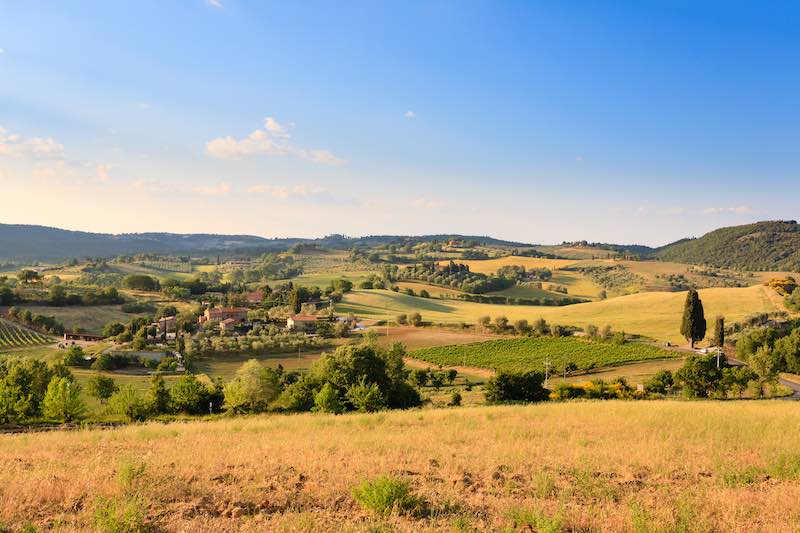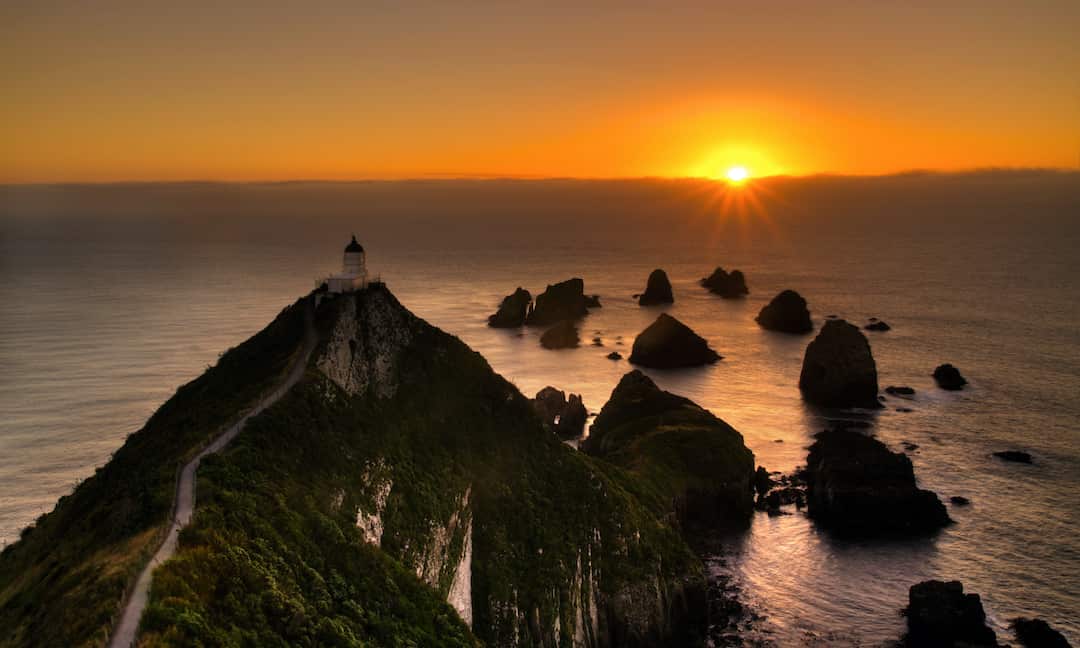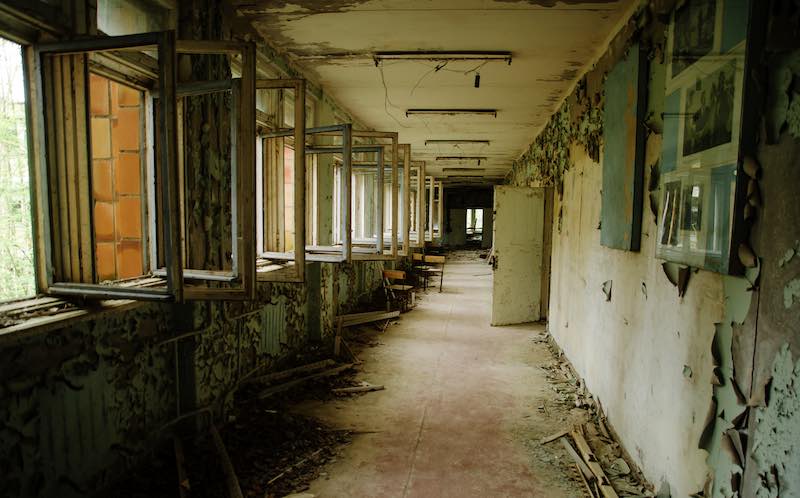
Tuscany, a region in central Italy, is a testament to the country’s rich history and vibrant culture.
Its picturesque landscapes, ancient architecture, and world-renowned cuisine have long been a magnet for travelers from around the globe.
This article will transport you to Tuscany’s cobblestone streets, sun-drenched vineyards, and bustling markets, offering an insider’s guide to this captivating region.
An Overview of Tuscany
Tuscany is often synonymous with Florence, its capital city.
However, the region offers much more than the Renaissance city’s artistic treasures.
From the rolling hills of Chianti to the medieval towns of Siena and Lucca, Tuscany’s diverse landscapes are peppered with hidden gems waiting to be explored.
Tuscan cuisine is another big draw – local specialties such as ribollita and bistecca alla fiorentina will tantalize the taste buds.
For an authentic taste of Tuscany, stroll through one of the region’s many outdoor markets or plan an olive oil-tasting tour.
Travelers looking to experience the area’s spectacular countryside can take advantage of Tuscany’s dense network of hiking trails.
The rugged terrain makes it the perfect destination for serious hikers, with beautiful views and traditional Tuscan villages around every corner.
Visitors can hop on a bike and cycle through the region’s vineyards or explore its winding roads for a leisurely sightseeing adventure.
For a unique experience, consider taking a hot-air balloon ride. It’s the perfect way to take Tuscany’s stunning scenery from above.
No matter what activities you choose, a trip to Tuscany will surely be an unforgettable experience. From savoring its delicious food and wine to exploring its breathtaking landscapes, it offers something for everyone.
The Charm of Tuscan Towns
Each city in Tuscany has its own unique character. Florence, with its world-class museums and stunning architecture, is a must-visit for any art lover.
Siena, known for its medieval brick buildings and the famous Palio horse race, offers a glimpse into Tuscany’s rich history.
Pisa, home to the iconic Leaning Tower, is a testament to the architectural prowess of the Italians.
With its Renaissance-era city walls and charming piazzas, Lucca is perfect for those seeking a laid-back Tuscan experience.
Tuscany’s Natural Beauty
Beyond the towns, Tuscany’s countryside is a spectacle in its own right. The Val d’Orcia, a UNESCO World Heritage Site, features a mesmerizing expanse of rolling hills and cypress-lined roads.
Here, you can explore olive groves, vineyards, and rustic farmhouses, offering a glimpse into rural Italian life.
In the north, the Apuan Alps boast some of Europe’s most impressive marble quarries and awe-inspiring hiking trails.
For a unique experience, explore one of Tuscany’s many thermal springs, such as Saturnia or Bagni di Lucca.
Gastronomic Delights of Tuscany
Tuscan cuisine is a celebration of the region’s agricultural bounty. From pecorino cheese made in the hills of Pienza to the olive oil pressed into the groves of Chianti, every dish tells a story of the land and its people.
Tuscany is also home to some of Italy’s finest wines, including Brunello di Montalcino and Vino Nobile di Montepulciano.
Wine-tasting tours are popular for exploring the region’s vineyards and learning about its winemaking traditions.
Art and Culture in Tuscany
Tuscany is a hub of art and culture. Florence alone houses some of the world’s most famous artworks, such as Michelangelo’s David and Botticelli’s Birth of Venus.
Besides Florence, towns like Pisa and Arezzo also host an array of impressive museums and galleries.
For a truly immersive experience, visitors should look at the streets of Siena. This walled city is home to abundant Renaissance-era art and architecture, including its iconic Gothic cathedral.
Tuscany’s Rich History
Tuscany’s history is as varied and vibrant as its landscapes. The region was the birthplace of the Etruscans, an ancient civilization known for its art and culture.
It later became a part of the Roman Empire, and its cities flourished under Roman rule. In the Middle Ages, Tuscany saw the rise of powerful city-states like Florence, Siena, and Pisa.
By the Renaissance, Tuscany was the center of art and learning, attracting artists and scholars from all over Europe. Its political power increased during the following centuries, eventually becoming a part of unified Italy in 1861.
Today, Tuscany is a popular tourist destination known for its stunning landscapes, world-famous artworks, delicious cuisine, and vibrant culture.
Visitors can explore the region’s rich history at one of Tuscany’s many archaeological sites or visit famous cities like Florence, Siena, and Pisa.
There is also plenty to discover in the region’s countryside, with its vineyards, olive groves, and rural villages offering visitors a glimpse of the traditional Tuscan way of life.
Celebrating Festivals in Tuscany
Tuscany is a region that loves to celebrate, and its calendar is filled with festivals.
Some, like the Palio di Siena, date back centuries and are steeped in tradition.
Others, like the Puccini Festival in Lucca, celebrate Tuscany’s contribution to the arts. From food festivals to historical reenactments, there’s always something happening in Tuscany.
Travel Tips for Tuscany
When visiting Tuscany, renting a car or hiring a driver is best, as many of the region’s attractions are spread out. The best time to visit is in the spring or fall when the weather is mild, and the crowds are smaller.
When dining out, take the chance to try local specialties like ribollita, a hearty vegetable soup, or bistecca alla fiorentina, a T-bone steak grilled over an open fire. And remember, every trip to Tuscany is complete with a visit to a local winery!
Conclusion
Tuscany is more than just a destination; it’s a sensory experience that engages the mind, heart, and soul.
Every corner of this Italian region invites exploration and discovery, from its art-filled cities to its sun-soaked vineyards.
Come for the history, stay for the food and wine, and leave with memories that will last a lifetime.…








